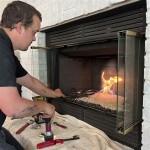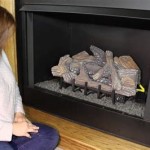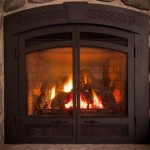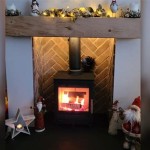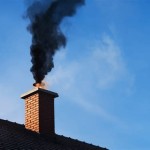Gas Fireplace to Wood Stove Conversion: Essential Aspects
When contemplating a conversion from a gas fireplace to a wood stove, it's imperative to meticulously evaluate the process, ensuring both feasibility and compliance with safety and building codes. Various factors necessitate careful consideration to guarantee a successful transition.
1. Chimney Inspection and Assessment
Prior to conversion, a thorough inspection of the existing chimney is critical. The chimney must be structurally sound, with no cracks, holes, or blockages that could compromise its integrity or safety when used with a wood stove. Additionally, the chimney liner should be inspected and replaced if necessary to meet the requirements for a wood-burning appliance.
2. Building Code Compliance
Each locality has its own set of building codes that regulate the installation, operation, and maintenance of wood stoves. It is essential to familiarize yourself with these codes and adhere to them strictly. This includes requirements for proper hearth construction, clearances to combustible materials, and smoke and carbon monoxide alarms.
3. Structural Modifications
Converting a gas fireplace to a wood stove often necessitates structural modifications to accommodate the new appliance. The fireplace may need to be enlarged to fit the wood stove, and a new hearth may need to be constructed to meet code requirements. Additionally, provision for proper ventilation and a clean-out door for ash removal should be considered.
4. Fuel Storage and Handling
Wood-burning stoves require a dedicated and safe storage space for firewood. The storage area should be dry, well-ventilated, and protected from pests. Proper handling techniques are essential to prevent injuries and maintain a clean and organized space.
5. Log Selection and Seasoning
Not all types of wood are suitable for burning in a wood stove. Seasoned hardwood, such as oak, maple, or birch, burns more efficiently and produces less smoke and sparks. It is recommended to season firewood for at least six months to ensure proper moisture content and optimal performance.
6. Ventilation and Air Supply
A properly functioning wood stove requires an adequate supply of fresh air for combustion. This air can be supplied through vents in the room or from an outside source. Insufficient air supply can lead to incomplete combustion, smoke production, and reduced efficiency.
7. Maintenance and Safety
Regular maintenance is crucial to ensure the safe and efficient operation of a wood stove. This includes cleaning the chimney and stovepipe annually, inspecting the appliance for any damage, and replacing gaskets and seals as needed. Proper fire safety practices, such as using a fire extinguisher and spark arrestor, should always be followed.

Can You Convert A Gas Fireplace To Wood Burning Stove Direct Stoves Resources
Converting A Wood Burning Fireplace Into Gas Heat Glo

Gas To Wood Fireplace Conversion Overland Park Ks Firplace Service

Wood Burner Conversion New Jersey Fireplaces Kjb

Converting A Fireplace To Wood Burning Stove Chesneys

Convert From Wood To Gas With A Insert The Kernel Burner

Want To Convert Gas Wood Fireplace Full Service Chimney

Want To Convert Gas Wood Fireplace Full Service Chimney

Wood To Gas Fireplace Conversion In Wisconsin Free Quote Badgerland Waesha

Converting A Fireplace To Wood Burning Stove Chesneys
Related Posts


